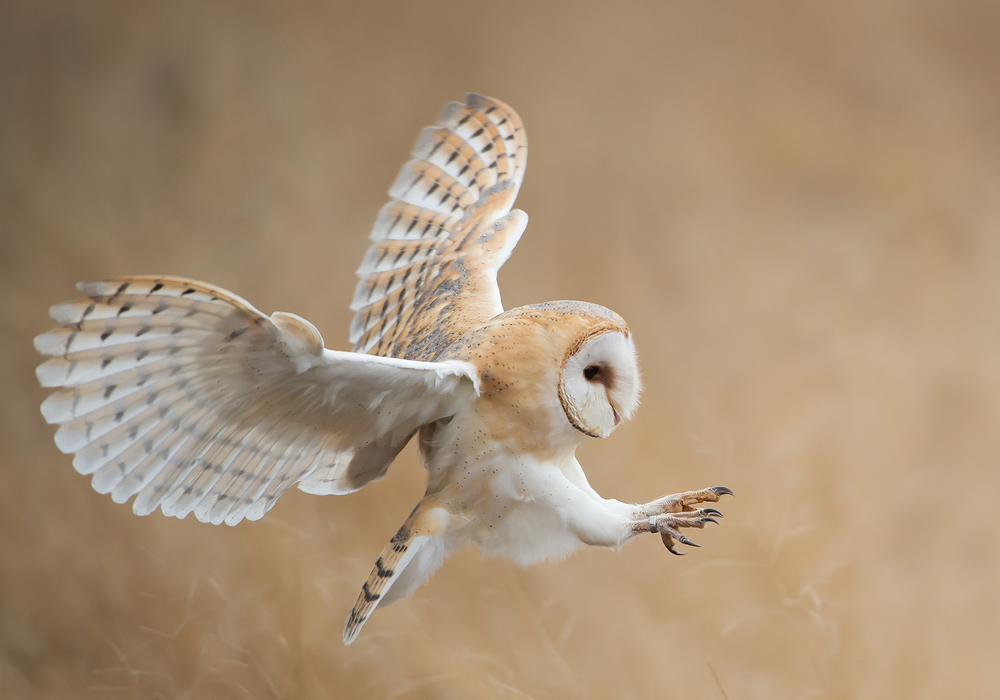
Owls are known to be excellent predators, in part due to their ability to fly quietly and stealthily. Researchers from Xi’an Jiaotong University (XJU) are examining owl wings in hopes of applying that knowledge to the creation of quieter aircraft turbomachinery blades, drones, and wind turbines.
“Nocturnal owls produce about 18 decibels less noise than other birds at similar flight speeds due to their unique wing configuration,” Xiaomin Liu, one of the paper’s authors, stated. “Moreover, when the owl catches prey, the shape of the wings is also constantly changing, so the study of the wing edge configuration during owl flight is of great significance.”
Currently, attempts to reduce the noise levels use serrations in rotating machinery, but have not produced consistent results.
“The blade design of rotating turbomachinery has gradually matured, but the noise reduction technology is still at a bottleneck,” says Liu. “The noise reduction capabilities of conventional sawtooth structures are limited, and some new nonsmooth trailing-edge structures need to be proposed and developed.”
The XJU researchers specifically studied ‘trailing-edge noise,’ which is caused when air flows across the back side of an airfoil. This causes turbulence in the air on the upper and lower surfaces of the blade or other “wing” structure – and that turbulence is the dominant sound that we hear from airplane engines.
Initial noise calculations and analysis performed on the designs based on owl wings are showing promise. For example, their results have shown that an asymmetrical design reduces the noise more than the symmetrical ones do. But, due to the complicated nature of airflow dynamics, more work is required.
“The silent flight of owls relies on the coupling effect of multiple factors,” the authors write. “These multiple factors deserve specific attention, rather than the duplication of a single coupling element, to further design quiet rotating machinery and micro-air vehicles.”
